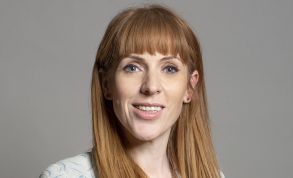Covid-19 update: 18 September
The intense scrutiny of the testing and contact tracing programme continued this week amid reports of people unable to get test and disturbing images of long queues at some testing centres. The Sunday Times reported it had seen leaked documents that revealed a backlog of 185,000 swabs leading to tests being sent to laboratories in Italy and Germany.
Shadow health secretary Jonathan Ashworth said that the ability to process tests was diminishing just as demand was increasing, with postgraduate students working in Lighthouse laboratories returning to university. ‘We were promised a world-beating system, so why are we sending tests to Germany and Italy for processing?,‘ he said in a Commons debate on Tuesday. ‘But, most importantly, people want to know when they will get a test and when this mess will be fixed. Today there will be thousands of ill people trying to book a test, only to be told none is available.’
Health secretary Matt Hancock said the good news was that capacity was at record levels and a record number of people are able to get tests. But he acknowledged that the testing programme faced ‘an enormous challenge’. ‘When a service is free, it is inevitable that demand will rise,’ he said. ‘The challenge is to make sure that we prioritise the tests that we have as a nation for those who most need them.’
Addressing specific concerns, he said the backlog was falling and was ‘less than one day’s processing capacity’. Challenged on when the problems would be solved, he said it would take ‘a matter of weeks’.
The political to-and-fro continued away from the debate. In Prime Minister’s Questions, deputy Labour leader Angela Rayner (pictured) – standing in for Sir Keir Starmer, who had been self-isolating while waiting for a test for one of his children – claimed that care home workers were still not getting the personal protective equipment or the testing they need.
‘The prime minister has put his faith in Operation Moonshot,’ she said, a reference to longer-term plan to massively increase testing capacity using new, quicker tests that are still in development. ‘But, meanwhile, on planet Earth, there were no NHS tests available for several high-infection areas, including for Tameside and Oldham in my own constituency’.
She asked for confirmation that all care homes were now having weekly tests. Mr Johnson insisted ‘to the best of my knowledge’ care homes should get weekly tests for all staff and tests every 28 days for residents.
Ms Rayner drew attention to the difference between promises to reach 500,000 tests per day by the end of October and the current average of 62,000 people [newly] tested per day. The prime minister again insisted that the UK had the most ‘thoroughgoing’ testing regime anywhere in Europe. ‘Per thousand people, this country is testing 2.54, Germany 1.88, Spain 1.91 and France 1.89,’ he said.
A fact check by The Guardian earlier in September found that, based on a range of data by Our World in Data, the UK is indeed at the top of the tests per thousand people table. However, it suggests that researchers see this as a poor indicator of how well a country is dealing with the virus. A country might ramp up testing as a reaction to a sharp increase in community transmission. Meanwhile a country that is suppressing the virus would not need to do so much testing.
The share of positive cases – the number of confirmed cases divided by the number of tests – is sometimes seen as a better measure. A country with a high positivity rate is not responding well to the pandemic as it is only testing a small fraction of those with the virus. At the time of the article, the report said the UK stood at 0.8%, below Spain (9.4%) and France (4.6%). Latest figures from Our World in Data show the UK figure has risen in recent days.
Testing problems
By the time Mr Johnson was sitting in front of the Commons Liaison Committee on Wednesday afternoon, he was ready to admit that the test and trace service ‘has huge problems’ although he rejected the characterisation of it as failing. And he reiterated his assertion of previous weeks that the service had done a ‘remarkable job in expanding that operation from a standing start’.
Dido Harding, head of NHS Test and Trace, echoed the prime minister when she went before the Commons Science and Technology Committee on Thursday. She said the demand for tests was three- or four-times capacity, but dismissed claims that the testing system was failing. Turnaround times had been increased to allow labs time to process a backlog of tests, she added.
Baroness Harding is also interim executive chair of the National Institute for Health Protection (NIHP), the new body that is taking over many of Public Health England's duties. The Department of Health and Social Care published a policy paper on the new body this week, including options for the wider PHE functions that will not be passed to the NIHP.
The plans to reach 500,000 daily tests by the end of October was put into perspective by Andrew Hayward, director of the UCL Institute of Epidemiology and Health Care and a Sage group adviser. He stressed the importance of increasing capacity over the winter months when he spoke to BBC Radio 4’s Today programme this week.
‘We’d expect demand and capacity to need to rise quite rapidly over autumn and winter as the number of people who develop symptoms that could be Covid increase,’ said professor Hayward. ‘Some of our research has shown that at least in winter you’d expect about half a million people a day to develop symptoms that are typical of Covid – even in a winter with no Covid – so you can see that capacity requirements will have to increase dramatically if we are going to keep up.’
The severe increase in infections over the last two weeks was underlined by the latest report from NHS Test and Trace. The 18,371 people testing positive for Covid-19 in the week to 9 September represents a 167% increase compared to the end of August and a 75% increase on last week. Some 571,400 people were newly tested in the week – an average of nearly 82,000 a day, representing a 27% increase compared to the previous week.
Regular testing of key workers makes up a large part of the difference between this and 179,000 tests processed each day on average in pillar 1 (health and care workers and those in hospital with clinical need) and pillar 2 (community testing for wider population).
Rising infections means more people transferred to the NHS Test and Trace service. Nearly 83% of these people were reached by the service and 83% of these provided details of one or more contacts. Of all the contacts identified, 74% were reached – falling short of the target of 80% of all positive test contacts to be reached.
This week also saw a drop in performance on turnaround times, with only 33% of results for in-person community swab tests being received within 24 hours – falling to 14% when looking at all test routes.
‘We are a long way off where we need to be with testing,’ concluded Saffron Cordery (pictured), deputy chief executive of NHS Providers. Although the number of positive cases has jumped by 75%, she said the actual numbers could be higher given the problems with accessing testing. And she highlighted the leakages in every stage of the contacting process – in the numbers of positive cases actually transferred to the tracing service, in the numbers contacted and then in the number of their contacts reached.
She said turnaround times for pillar 2 tests marked a ‘significant drop from already low figures’. ‘Trust leaders are increasingly concerned with the current testing shortages impacting on NHS service recovery and winter preparations due to staff and their family members being unable to access a test resulting in increasing NHS staff absences,’ she said. ‘Additionally, with the number of positive Covid-19 cases increasing, but a reduction in the proportion being contact traced, we are looking at renewed pressure on the NHS.’
She called for more detail on the reasons behind the shortages, how widespread they are and how long they will last.
Further restrictions
By the end of the week, the government had imposed new restrictions on the North East of England, affecting Newcastle, Gateshead, Sunderland, Northumberland, South Tyneside, North Tyneside and the County Durham council area. Measures to restrict the spread of the virus in England’s north-west and parts of West Yorkshire and Midlands were also put in place.
And there were reports that the prime minister was considering a time-limited lockdown, or ‘circuit break’, for the whole of England, due to the recent acceleration in the number of cases. It was reported that some hospitality businesses would be required to close – or have limited opening hours – though schools and workplaces would be kept open.
NHS Confederation director Layla McCay (pictured) said it appeared the spread of the virus was ‘no longer being adequately controlled’. This is especially alarming at a time when winter is almost upon us, and access to testing has become a major problem, including for frontline staff,’ she said.
An effective test and trace system is essential and it was ‘concerning that this system seems to be faltering under predictable pressure’. However she insisted that a situation must be avoided ‘where either A&E departments or GP surgeries are overwhelmed with people seeking tests’.
And NHS Providers chief executive Chris Hopson added that there were also cases of problems for patients needing a test prior to planned hospital treatment. ‘[This] cuts across trusts’ ability to restore services in the way they have been asked to do,’ he said.
‘We are concerned, for example, that patients waiting for hospital treatment can no longer highlight this fact when applying online to access a test. We need to prioritise tests for healthcare workers and their families and patients coming in for treatment, many of whom have already waited longer than normal.’
Restoring services
Mr Hopson said this week that trusts were moving faster with restoring services and activity volumes than they expected a few months ago. However, he added that the majority would still not meet targets, which are linked to payment adjustments in the second half of the year. More details on how this claw back scheme will work were needed, he said
Mr Hopson was responding to the announcement by NHS England and NHS Improvement of system financial envelopes for the rest of 2020/21. While expressing relief that the funding had been announced, he said his initial reaction was that the allocations were lower than expected and trusts would need to work through the figures to understand their income streams.
The new arrangements put a greater focus on system-level funding, with each system needing to nominate a lead clinical commissioning group to channel some of the funding. The HFMA has produced a summary of the contract and payment guidance.
As part of the restoration of services, a letter from NHS England and NHS Improvement to GPs and CCGs this week stressed the importance of providing face-to-face appointments for patients that needed them. A communications toolkit was also issued to help practices provide clear messages to patients about access to services.

However, the letter drew an angry response from the BMA’s GP committee chair, Richard Vautrey (pictured), who insisted face-to-face appointments continue to be offered where safe and necessary.
'Any inference that in-person consultations were put on hold is an affront to the committed GPs who have continued to go to work throughout the pandemic,’ he said.
Dr Vautrey added that practice workload had increased significantly as a result of the pandemic and the ‘unprecedented number’ of people waiting for postponed procedures.
‘NHS England and NHS Improvement have so far failed to recognise the significant impact this is having on general practice and should be tackling this as a priority,’ he said.
Related content
We are excited to bring you a fun packed Eastern Branch Conference in 2025 over three days.
This event is for those that will benefit from an overview of costing in the NHS or those new to costing and will cover why we cost and the processes.